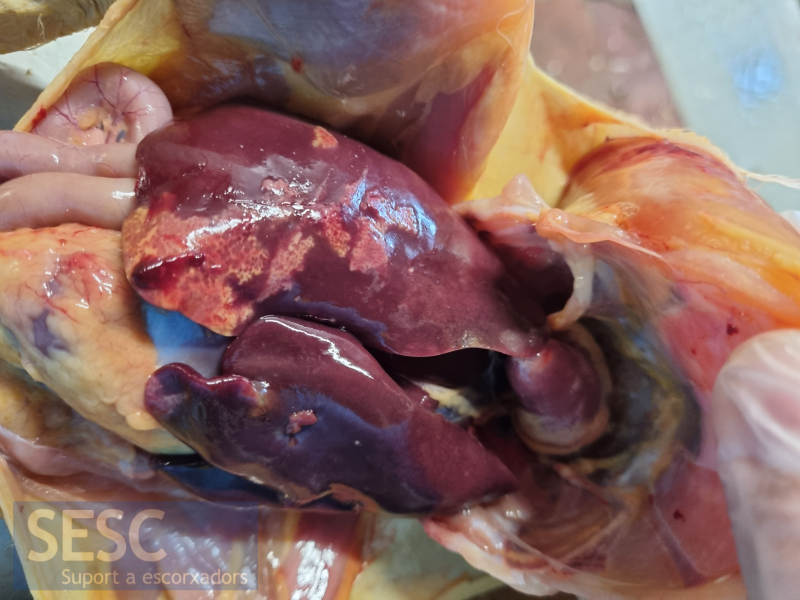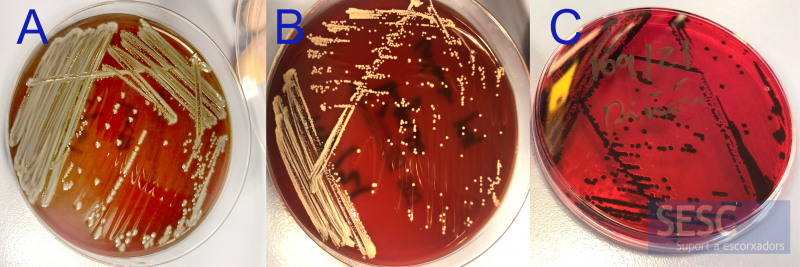Enterococcus septicemia in broiler carcasses
Three broiler carcasses were submitted from three batches from the same farm with 62/13993 condemned carcases of 40-day-old animals that presented multiple lesions that, in a variable fashion, included: fibrinous coelomitis, ascites, pericarditis, hepatitis, pneumonia, nephritis, splenitis, arthritis, pododermatitis and dermatitis in the pectoral region. In the antemortem examination the animals were dirty and some with haemorrhagic diarrhea.
The inspectors wanted to rule out that the lesions were caused by Salmonella since that batch had been positive for this microorganism on the farm.
At necropsy the following lesions were observed:
| Carcass | Necropsy findings | Microbiological culture |
| 1 | Subacute moderate multifocal to coalescent necrotizing and heterophilic hepatitis.
Subacute segmental fibrinous pericarditis. Mild, generalized lymphoplasmacytic myocarditis. |
Enterococcus faecalis (K,S,L)
Aeromonas hydrofila (K,S,L) Salmonella enterica serovar Bredeney (K) |
| 2 | Moderate, subacute, diffuse necrotizing and heterophilic hepatitis
Fibrinous pericarditis Lymphoplasmacytic myocarditis |
Enterococcus cecorum (S)
Enterococcus faecalis (K,S,L) Aeromonas hydrofila (K,S,L) |
| 3 | Intense multi-organ congestion
Acute, generalized interstitial pneumonia. Mild lymphoplasmacytic and heterophilic pericarditis and myocarditis. Mild, bilateral heterophilic typhlitis. Chronic, extensive focal necrotizing myositis (pectoral muscle). |
Enterococcus faecalis (K,S,L)
Aeromonas hydrofila (K,S,L) S. Bredeney (S) |
K: kidney, L: liver; S: spleen.
The observed lesions can be summarized as a bacterial septicemia. In this case, Enterococcus faecalis is the most likely cause of these lesions since Aeromonas is usually related to contamination of the carcasses during processing (although it cannot be ruled out that it is also involved in septicemia).
E. cecorum (which can also cause similar pathology) and two isolates of Salmonella Bredeney have also been isolated. The Salmonella serovars that can cause lesions of this type are S. pullorum and S. gallinarum, and no cases have been seen in commercial birds in Catalonia for years. The serovar isolated in this case -Bredeney- is asymptomatic and, most likely, unrelated to the observed lesions.

Broiler carcass with necrotizing hepatitis lesions.

A: Isolate of Aeromonas hydrofila on blood agar. B: Isolate of Enterococcus faecalis on blood agar. C: Isolated from S. Bredeney in XLT-4, selective medium for Salmonella. Photos: Lourdes Migura-Garcia IRTA-CReSA.

